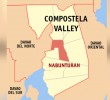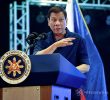Around a week ago, when the reports of the Talaingod Manobo exodus first began trickling in, I happened to glance at a copy of a Mindanao regional daily at a local cafe. The front page proudly bannered that two battalions had been brought in from Luzon to add to counter-insurgency operations here in the Davao region. In my gut, I knew that this happy headline had something to do with the misery of my friends and many others in Talaingod.
This fear was confirmed when the evacuees arrived and told us that some of the soldiers who carried out the military operations and were now occupying their communities were Tagalog-speakers. What happened, is happening, in Talaingod was a classic case of divide and conquer, a despicable tactic first used by foreign colonizers, now being used by Filipinos against fellow Filipinos.
Spanish conquistadors were successfully able to utilize this because early Filipino communities were fragmented polities; today, I suspect they are capitalizing on the apparent differences between us (the “majority”, the “mainstream”) and them (the “minority”, the recalcitrant few who refuse to be integrated) – what anthropologists call “othering”. For the formula to be successful it must be sold to the general populace in order to (to put it bluntly) make us not care about what happens to a handful of “tribal people”.
The challenge now is to show that – though there is no denying that we are different – their struggle for their homeland and the gross injustices that are being done to them have concrete implications in our lives; in short, why we should help defend the Pantaron. I’m going to keep this simple by concentrating on four points.
First, our environment is at stake. The Pantaron Mountain Range is a rare ecological treasure in the Philippines. It has been identified by biologists as a biogeographic sub-sub region under the Greater Mindanao ecological zone, one of our few remaining biodiversity corridors with old growth forests that house rare species of flora and fauna.
The headwaters of major Mindanao river systems – the Pulangi River, and our own Lasang River and Davao River, are located in the Pantaron Range. Any environmental disturbances in these high altitudes will have far-reaching effects in the water systems in the lowland areas of Cotabato, Agusan and Davao.
It is no accident that much of the portions of the Pantaron from where the evacuees came from are in a relatively better state. In the nineties, as rampant logging have all but annihilated centuries-old forests all around their traditional domain, these Talaingod Manobos decided to actively defend their territory by organizing themselves into what is now their primary political organization, the Salugpungan Ta Tanu Igkanugon. This marks one of the rare success stories of indigenous peoples who take on entities much bigger than they: the logging firm Alcantara and Sons and their guards pull out of Talaingod by the end of the decade.
Thus, if you now look at aerial views of this portion of the Pantaron (try Google Earth or Mapcarta), you’ll notice that the Talaingod side of the mountain is still a lush emerald green, while just across the Bukidnon border the terrain is of a drab hue, indicative of grasses typical of denuded slopes. This episode is an admirable example of environmental conservation going hand in hand with cultural conservation and self-determination.
Therefore, the second reason why we should defend the Pantaron is because not only is our natural diversity at stake, our cultural diversity is, as well.
In the face of globalization and cultural homogenization, the Talaingod Manobos are one of the few resolute hold-outs. Unlike stereotyped views of indigenous peoples as meek pitifuls who keel over in the midst of the march of modernity, the Talaingod Manobos have no insecurities whatsoever. They look you in the eye and they talk to you as equals. They believe in the strength of their culture in the way they believe their cause is just.
In this sense we have much to learn from these people – we of the American dreams and neo-colonial subservience – beyond appreciating their culture as mere song and dance, colorful costumes in parades, and kitschy installations in malls during Kadayawan. In them we can find genuine cultural pride and conviction, something we direly need in this time of the WTO, semi-permanent foreign military presence, and (oh yes, I’m going to say it) academic calendar shifts.
Third, as taxpayers, our public resources are at stake. There are two issues here: military spending, and emergency funds spending.
The Aquino Government has not been shy about saying that it’s Oplan Bayanihan would now be concentrating in the Davao region, as this ostensibly is the communist hotbed. The battalions mentioned earlier appear part of this plan, including the troops currently occupying Talaingod.
So, how have they been doing at their job so far, in terms of enemy casualties or captured arms? They seem quite mum about the issue, despite having started operations more than a month ago. What we have instead are plenty of reports of human rights violations, terrorized schoolchildren in schools that have been red-tagged, aerial bombings, arbitrary detentions, and threats.
And how much is our government spending for this? For Oplan Bayanihan, all in all a neat P162 billion this 2014, or almost twice the budget for health this same year.
On the LGU side, a few days after the Manobo evacuees arrived in Davao City, Talaingod mayor Basilio Libayao declared the town to be under a state of calamity. We all know that this is meant to immediately access emergency funds. According to media reports, Libayao has claimed to have serviced more than 2000 of his constituents with these funds. Now, I have been at the evacuation center almost everyday since this began, and while we have indeed received plenty of donations from many kindhearted persons, I have yet to see goods enough for 2000 (double the number of evacuees we have here!) individuals come in from the LGU.
What did arrive one day was one pick-up truck carrying LGU representatives and five sacks of rice. There’s more where that came from, they said, as long as the evacuees packed up and returned to Talaingod. But the community leaders were adamant: as long as the military are still in their communities, they will not return. They stoutly refused the five measly sacks.
As a taxpayer, I was appalled at how relief was used as a bargaining chip, something to be given only when certain conditions are met. I was also offended at what I felt was adding insult to injury, as if these people were pathetic enough to be lured by five sorry sacks of rice.
And all for what? Perhaps to rehabilitate Libayao’s flagging reputation after virtually one entire barangay (out of three) walked out on what they saw was his ineffective leadership.
But haven’t we all seen this before, the use of public resources for the political survival of officials, the PR-PRs (Public Relations-Press Releases) of smooth relief operations, but with reports on the ground telling a very different situation?
Bottom-line: I don’t want my taxes to go to scaring little kids, adding to the suffering of people, making politicians look good, and other asinine uses on which the government seems OK to spend it.
Finally, our civil liberties are at stake. Dialogues between community leaders and representatives of government were shot through with either denials that there is a crisis, or pronouncements that they were not informed and that they were caught off guard. When pressed further about how they could not notice the entry of two infantry brigades through the Bukidnon backdoor, they finally admit that they could do nothing about it. The soldiers’ order come from the top, and local officials use this as an excuse to just shrug their shoulders at the matter.
My question now is, whatever happened to civilian rule? Are these officials agreeable to the usurpation of their powers and the exposure of their constituents to rights violations? Is this our lot under Oplan Bayanihan, that an entire town can be placed under de facto martial law?
Last I checked, no military dictator resided in Malacanang. Or is there?










